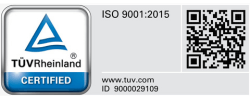ESS Chamber is used to evaluate the integrity of the thermal-mechanical properties of the product after exposure to rapid change of ambient temperature.
Normally the temperature change rate is less than 20C/min, which can simulate the fastest temperature changing rate in real-world environment conditions.
The chamber is used for the screening test and failure mode evaluation of photoelectric components, interconnection circuits, component units, and electronic devices.

Environmental stress testing is a type of test in which the material is exposed to high and low temperatures or continuous temperature cycles during vibration to ensure that the combination of thermal and vibration stresses will not cause device failure.
Environmental Stress Screening (ESS) is the process of exposing a newly manufactured product to environmental stresses to identify and eliminate latent defects introduced during the manufacturing process.

It is part of the manufacturing process and is therefore performed on 100% of the items manufactured. After ESS, the remaining product population will have higher reliability than a similar unscreened population due to the resultant elimination of infant mortality defects.
The benefits of testing depend on the maturity of products, and more mature methods are expected to yield fewer errors.
This means if no ESS is performed, it will take up to one year for the population to naturally reach the expected steady-state failure rate observed during the useful life period.
Another approach to screening levels is conducting a Highly Accelerated Life Test (HALT) to determine operating and destruct margins. HALT is a design evaluation process to identify weaknesses and determine effective stress limits for highly accelerated stress screening (HASS).

- Thermal Cycling Screen
- Temperature Range: -70°C to +180°C
- Humidity Range: 10% to 97%
- Temperature Rate of Change (Minimum)20°C/Minute 15°C/Minute
ESS is common for military products and components that normally operate at extreme temperatures and for industrial products such as military components automotive components – engine components and components Test temperature range –55 °C up to +125 °C Right. The industrial temperature range is –40 °C to +85 °C
Environmental stress screening is a way of proving operational stability at extremes, such as desert conditions, hot manufacturing environments or very cold weather. Test types include highly accelerated lifetime testing (HALT) and highly accelerated stress screening (HASS).

